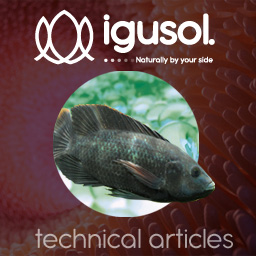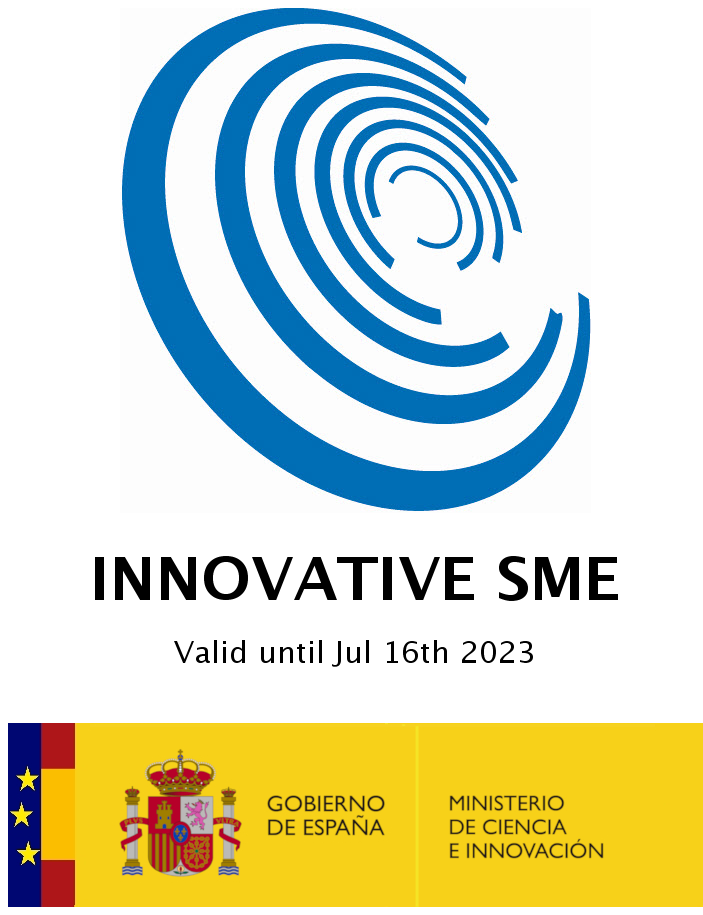Evaluation of the anterior intestine in Nile Tilapia fingerlings (oreochromis niloticus) supplemented with EMERALD
Monday, October 18th 2021
Silvia Jim�nez, Lda. Veterinaria
Contextualization
Tilapia production plays an important role in world�s food safety as it�s an important source of protein for human consumption. Nile tilapia (Oreochromis niloticus) is one of the most cultured and commercialized freshwater species in the world, representing approximately more than 6.000 million dollars (FAO,2017).
The intensification of the culture generates stress in fish, which increases the susceptibility to infectious diseases (Zepeda, 2015). This has increased the use of antibiotics as profilactics or therapeutics, leading to antibiotic resistance, environmental contamination and residues in the final product. The bad use and excessive use of antibiotics are a growing problem resulting in restrictions and legal limitations in their use. Those limitations imply the search of new therapeutic alternatives, which focus on products that have effects similar to antibiotics and aren�t a risk for consumer�s health. Or products that promote the own immune protection by the animals.
The use of essential oils in aquaculture is taking more relevance due to the immunostimulationg effects, allowing the reduction in disease presentation, promoting the reduction in the use of antibiotics (Abdollahzadeh et al., 2014). They also contribute to positive benefits in the intestinal anatomy and physiology acting directly in the digestion and nutrient absorption (Mohamed et al., 2014) having a relevant function in the immune system.
The intestine has a relevant function in the immune system, as many infectious diseases are initiated by the colonization of intestinal mucosa and the efficiency of the intestinal barrier depends on mucus production and epithelial integrity, as well as the balance of commensal bacteria, which keep the intestinal homeostasis and fish health avoiding the appearence of infectious diseases.
The main protective elements at the intestinal level are, by one side the caliciform cells which secrete mucopolyssacharides which form part of the most important barrier against opportunistic bacteria containing antimicrobial substances, immunoglobulins and lysozymes which destroy the cellular walls of pathogenic bacteria preventing their colonization (Schroers et al., 2009). By other side, the density and size of the intestinal folds d�pend on the number of cells that compose it, thus the more number of cells, the bigger the size of the intestinal folds and consequently the bigger the nutrient absorption area.
The objective of this study was to evaluate the benefits that EMERALD could contribute in the feeding of Nile tilapia fingerlings (Oreochromis niloticus), for it the following parameters where analyzed: growth and weight gain, stability of the gastrointestinal system (histomorphometry and histochemistry) and the toxicity of this supplement in cultured fish.
Problem Statement
Tilapia is a telostheus freshwater fish, belonging to Cichlidae family. It�s presence worldwide is due to it�s precocity, prolificity and tolerance to high densities, resistance to diseases and it�s adaptabilty to polycultures (Martini y Morales, 2017).
The largest tilapia producers are China, Egypt and Thailand, being United States one of the main importers, consuming 225.000 metric tons annually
There are very few studies related to the use of essential oils in the diet, as additives in culture systems to determine the positive effects concerning growth, weight gain, intestinal morphology and especially as an immunostimulating to stop the opportunistic bacteria in the intestinal mucosa.
Essential oil are used as an alternative to substitute antibiotics as growth promotors due to the resistance acquired by some bacteria. However those phytochemicas are usually composed of volatile and unstable molecules, making the chemical and physical characteristics of essential oils elements to consider in nutrition.
Solution provided by Igusol
EMERALD is a commercial product of IGUSOL Advanced SA, Spain, witha high concentration of essential oils. It has been designed with an innovative process of microencapsulation, with which their different components are relased gradully along the digestive tract of the animal, avoiding it�s volatilization and enabling a better homogenicity in food. It�s main effects are : reinforcement of the intestinal barrier, stimulatation of the immune system, improve the protection of microvilli and improve the activity and stability of beneficial intestinal bacteria.
Study methodology
This study was completed in the peruvian University Cayetano Heredia, where the histological and histochemical analysis were done. The investigation was accomplished with the approval of the Ethics Commitee of the Universty Cayetano Heredia.
600 tilapia fingerlings were selected and fed 6 times per day during the 30 day period of the study. The animals were divided randomly in 2 treatments: balanced food supplemented with 500 g/ton of EMERALD and the same balanced food without supplementation. Each treatment was allocated in a circular water tank of geomembrane of 60 m3 with a sowing density of 5kg/m3
10 fish per treatment were sampled the following days : 0,15 and 30 of the experimental period.
The parameters to be analyzed were :
- Bodyweight (g) and length (cm).
- In the anterior intestine
- Histomorphometry: Length, Depth and number of caliciform cells in the intestinal folds
- Histochemistry: Presence of neutral glycoproteins, sulphated acid and non-sulphated acids.
RESULTADOS �
- Growth
- The supplementation with EMERALD shows significative differences in bodyweight and length of the Tilapia fingerlings at the 30 days post treatment (P < 0,05). However, there weren�t significative differences at 15 days.s [im]tabla1en.png[/im]
- Increased weight gain at the day 15 and 30 supplementation with EMERALD (P < 0,05).
- The growth curve of the tilapia fingerlings increases at the 15th day and 30th day with EMERALD.[im]grafico2en.png[/im]
- Intestinal morphology
- More number of caliciform cells with (500 g/t) of EMERALD at 30 days of treatment (P < 0,05)..[im]tabla2en.png[/im]
- More length and width of the intestinal folds with (500 g/t) of EMERALD at days 15 and 30
- El tratamiento con EMERALD� incrementa la longitud y la anchura de los pliegues intestinales (P < 0,05). [im]grafico3aen.png[/im][im]grafico3ben.png[/im] [im]imagen1.jpg[/im] [im]imagen2.jpg[/im]
- Se muestra en los siguientes gr�ficos y cortes intestinales: The treatment with EMERALD increases the length and width of the intestinal folds (P < 0,05). It�s shown in the following graphics and sectioned intestine[im]grafico4en.png[/im][im]imagen3.jpg[/im]
Histochemistry:
No significative differences were found in the reaction of the neutral glicoproteins during the three periods of sampling (0,15 and 30 days) postalimentation (P < 0,05).
The sulphated acid glicoproteins showed significative differences in the Alcian Blue pH 2,5 histochemistry suplemented with EMERALD after 30 days (P < 0,05)
The non-sulphated acid glicoproteins showed significative diferences in the Alcian Blue pH 0,5 histochemistry suplemented with EMERALD after 30 days (P < 0,05). - Treatment with EMERALD increases the reaction of the glicoproteins with histochemistry tests PAS/H, Alcian Blue pH (0,5 and 2,5) compared to the control group (0 g/t) (P < 0,05) It�s shown in the following graph and intestinal section. [im]grafico5en.png[/im]
Conclusions-
- Tilapia fingerlings nurtured with EMERALD showed a greater weight gain significatively, with an increase of 1,5 g/fingerling at 30 days of treatment. The size also increased significatively in the EMERALD group with 0,41 cm/fingerling during the measurement at day 30. Supplementation with EMERALD in the food at a dose of 500 g/t improved significatively the growth parameters in Nile tilapia fingerlings.
- Short-term supplementation with EMERALD at a doce of 500 g/t increased the number of caliciform cells a 17,7% in relation to the control group where the increase was 14,78%. EMERALD stimulates the cellular components of the non-specific immune response in tilapia.
- Short-term supplementation with EMERALD at a dose of 500 g/t improved the intestinal morphology and the length and width of the intestinal folds
- Supplementation with EMERALD acts as a growth promotor increasing the secretion of neutral and acid (sulphated and non-sulphated) glicoproteins related to innate immunity, improving intestinal protection and health of tilapia.


 Download in Pdf
Download in Pdf



